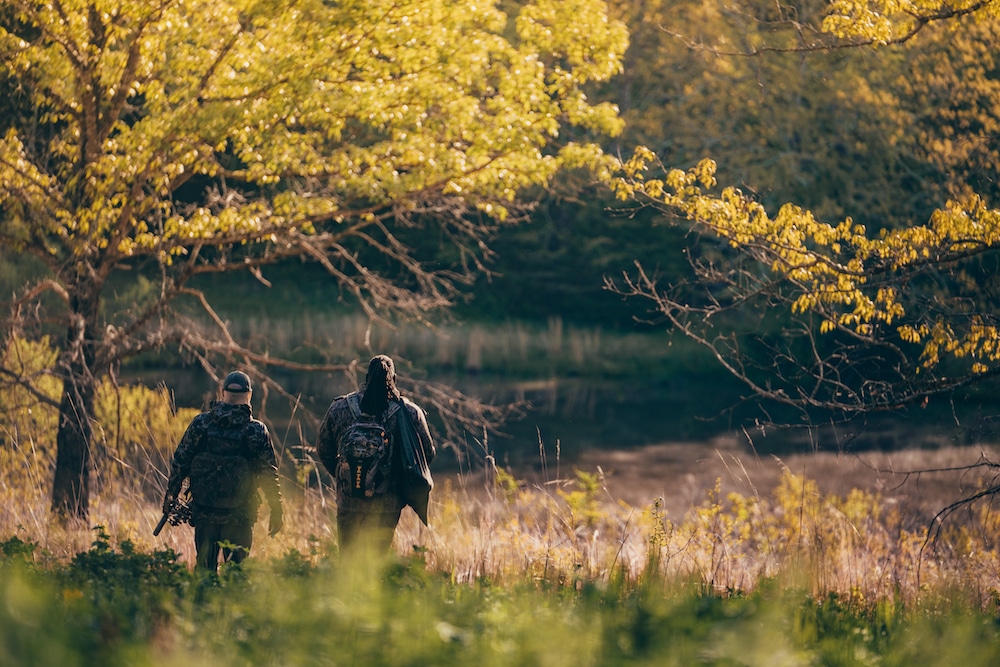Mature bucks don’t get old by being stupid. Usually they remain bedded until the security of darkness to feed. In fact, as crepuscular creatures (most active at dawn and dusk), most whitetail encounters happen early and late in the day. If you’re lucky enough to get a shot at one, it’s often as shooting light fades.
Legally, most states allow you to bowhunt for big game from a half-hour before sunrise to a half-hour after sunset (check your state’s regulations). That’s the legal definition of shooting light. But there are times when it’s overcast, when you’re hunting in thick conifers, when you’re inside a dark ground blind or when your aging eyes simply don’t focus well enough anymore and you can’t see well enough to shoot, even though the clock says you can legally do so.
Ethical hunters know that if you just can’t see well enough to make the shot, it’s better to let down your bow and try another day than to take an iffy shot that may only wound a deer.
Here are some tips to help you shoot in those dim dawn and dusk situations.
Most bowhunters practice shooting during the day when visibility is good. But it makes sense to shoot at a target during low-light conditions in preparation for real hunting situations. Doing so will train you to find your pin in your peep so when you finally do have a buck in your sights, taking the shot will be second nature.

Find a bright spot along the edge of a clearing for greater visibility. Photo Credit: Bowhunters United
Where you hunt can also dictate how well you can see as the clock ticks down. You’ll probably be able to see better while hunting along a field edge than you would in a thick forest. And your fiber-optic sights can gather more light while in a treestand than from within a ground blind. Most hunters base their stand locations on where they expect to see deer, not on where they can maximize their low-light shooting opportunities. But if your aging eyes are failing you, you might want to put some extra thought into where you sit.
Outfitting your bow with the right sights will do the most good in helping you make a shot on the edge of darkness. First off, consider using a larger peep sight (or even eliminating a peep altogether). And make sure you choose a sight with a glow ring that helps your eyes quickly align the peep with the ring.

A green sight pin will be easier to see than a red one. Photo Credit: Bowhunters United
Choose your pins carefully. Green pins are the easiest to see as light fades, and red pins are the most difficult. Fiber-optic sights have been around a long time now. The longer the fiber-optic fiber, the better the light-gathering capabilities. Experiment with different pin sizes. Larger pins are easier to see in dim light, but they may obscure the target. Using just one or two pins keeps your sight picture less cluttered and helps you better see the target.
Bow sight companies now offer a variety of advancements to address the problems of hunting in low-light conditions. Glow-in-the-dark sight tape helps you see your aiming point on slide-style archery sights. Battery-operated adjustable rheostat sight lights illuminate your pins so you’ll never have to worry about inadequate light gathering by your fiber optics. You can turn up the brightness if you need it or turn it down to prevent the sight from impairing your ability to see the target beyond. Adjustable red-dot sights give you an illuminated aiming point. In fact, using a red dot eliminates the need for pins, a peep sight and even a kisser button. Lighted nocks won’t help you aim, but they will help you track your arrow’s path, letting you know if you made the shot in low light and potentially helping you find your arrow.
Unfortunately, there are some drawbacks to this technology. Lighted sights — even lighted nocks — aren’t legal in all states, so check your state’s regulations before outfitting your bow with them. And even in states where lighted sights are legal, some record-keeping organizations prohibit entry of animals taken with the aid of that technology into their record books.
Even if it’s still legal shooting time, your ability to shoot a deer depends on whether you can actually align your sights on the target. Outfitting your bow with the right gear can help you confidently take a shot when light fades.